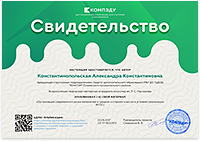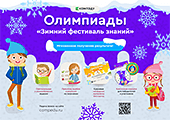LESSON PLAN
| Unit 1: All about me | School: Petrovka secondary school | ||||||||||||||||||||||||||||||||||||||||||||||||||||||||||||||||||||||||||||||||||||||||||||||||||||||||||||||||||||||||||||||
| Term 1 | Teacher name: Mayevskaya I. F. | ||||||||||||||||||||||||||||||||||||||||||||||||||||||||||||||||||||||||||||||||||||||||||||||||||||||||||||||||||||||||||||||
| CLASS: 2 | Number present: | absent: | |||||||||||||||||||||||||||||||||||||||||||||||||||||||||||||||||||||||||||||||||||||||||||||||||||||||||||||||||||||||||||||
| Lesson title | My clothes and things | ||||||||||||||||||||||||||||||||||||||||||||||||||||||||||||||||||||||||||||||||||||||||||||||||||||||||||||||||||||||||||||||
| Learning objectives | 2.L1 understand a range of short basic supported classroom instructions 2.S1 make basic statements related to personal information, people and objects on familiar topics and classroom routines 2.UE3 use common adjectives in descriptions and to talk about simple feelings | ||||||||||||||||||||||||||||||||||||||||||||||||||||||||||||||||||||||||||||||||||||||||||||||||||||||||||||||||||||||||||||||
| Lesson objectives | By the end of the lesson learners will be able to:
| ||||||||||||||||||||||||||||||||||||||||||||||||||||||||||||||||||||||||||||||||||||||||||||||||||||||||||||||||||||||||||||||
| Useful classroom language for dialogue/writing: | What is this?/What are these? What colour is this clothes? What are your favourite clothes? | ||||||||||||||||||||||||||||||||||||||||||||||||||||||||||||||||||||||||||||||||||||||||||||||||||||||||||||||||||||||||||||||
| Values links | Common history, culture and language | ||||||||||||||||||||||||||||||||||||||||||||||||||||||||||||||||||||||||||||||||||||||||||||||||||||||||||||||||||||||||||||||
| Cross-curricular links | Art, PE | ||||||||||||||||||||||||||||||||||||||||||||||||||||||||||||||||||||||||||||||||||||||||||||||||||||||||||||||||||||||||||||||
| Previous learning | Colours, Present Continuous Tense | ||||||||||||||||||||||||||||||||||||||||||||||||||||||||||||||||||||||||||||||||||||||||||||||||||||||||||||||||||||||||||||||
| Plan | |||||||||||||||||||||||||||||||||||||||||||||||||||||||||||||||||||||||||||||||||||||||||||||||||||||||||||||||||||||||||||||||
| Planned timings | Planned activities | Resources | |||||||||||||||||||||||||||||||||||||||||||||||||||||||||||||||||||||||||||||||||||||||||||||||||||||||||||||||||||||||||||||
| Start 5 min | Organizational moment The teacher greets students; students respond to greeting and take their places. Game "Team Racing". The class is divided into 2 teams. Line up the 2 teams at one end of the classroom with the old clothes on the table at the other end. The teacher will shout out an instruction (e.g. "Put on some socks!") and one player from each team will race against the other to the pile of clothes, put on the clothing item and run back to their team. The student who gets back first wins a point for his/her team. At the end, the team with the most points is the winner. |
| |||||||||||||||||||||||||||||||||||||||||||||||||||||||||||||||||||||||||||||||||||||||||||||||||||||||||||||||||||||||||||||
| Middle 7 min
2 min 10 min
2 min
4 min
3 min
7 min
| Review: names of clothes and Present Continuous The volunteer goes to the blackboard and turns to the class. Other students answer questions: What is this pupil wearing? What colour are his clothes? Then the teacher says to the class that the volunteer is going to dress as much as possible different types of clothes. The teacher shows some clothes (for example, a T-shirt) and asks “What is this?” Students answer the questions using Present Continuous Tense and repeat their answer 3 times chorus, then 3 pupils individually. Then the teacher continues to show clothes. Task 1. Pre-watching: The teacher asks some questions and students answer the questions:
While-watching: Students watch the video and match the words to the pictures and name the clothes answering the questions according to information in the video: What is this? What are these? What colour is …?
Differentiation by outcome. Low-achieving students have to match the words to the pictures and name the clothes answering the questions. Mid-achieving students have to make up word combinations. High-achieving students make sentences with these words. Post-watching: The teacher shows a picture, asking questions and students answer Yes/No. For example: Is it a suit? - Yes. - Is it a skirt? - Are these trousers? - Are these socks? - Is it a dress? - Is it a T-shirt? - Are these shorts? Energizer “Clothes salad”. The teacher asks the class to form a circle. The teacher stands in the middle of the circle, then hands out pictures with clothes to students. The teacher explains the instructions to the students: if the clothes are called, for example, a dress, those students exchange places. If the student doesn’t have free place, he becomes in the middle of the circle and the game begins again. If the leader says “CLOTHES SALAD” all students exchange places. Task 2. Formative assessment for whole class. The teacher hands out worksheets with the tasks and students do these tasks according the teacher’s instructions. Learning objective: 2.L1 Understand a range of short basic supported classroom instructions. Level of thinking skills: Application Assessment criteria: Recognize classroom instructions with support. Task. Follow the teacher’s instructions. 1. Show a dress, show a skirt, show a suit. 2. Write 5 on the skirt. Colour it pink. 3. Say what colour your suit. Please, colour the suit blue in this picture.
Differentiation by support. While students work in pairs (peer-assessment), a teacher observes and provides necessary help to low-achieving students. Task 3. Work in pairs. Students look at the pictures, answer the question: What is this?, then find these words in “clothes wordsearch”.
Peer-assessment: Students exchange the handouts and check each others looking at the blackboard. | http://www.youtube.com/watch?v=pNWHpZ7tzEs Worksheet 1 Worksheet 2 Worksheet 3 Slide PPT | |||||||||||||||||||||||||||||||||||||||||||||||||||||||||||||||||||||||||||||||||||||||||||||||||||||||||||||||||||||||||||||
| End 3 min Homework 2 min | Feedback. “Traffic light”. The teacher gives instructions to raise the green card if the lesson was easy, raise the yellow card if they liked the lesson but have some difficulties, to raise the red card if the lesson was difficult. I liked the lesson but I have some The lesson was easy. Students follow the teacher’s instructions. Then the teacher asks students who raised: the green cards: -What was clear? the yellow cards: - What was unclear? the red cards: - What was difficult? Differentiation by hometask. The teacher gives different level tasks. Low-achieving students draw a picture with kind of clothes they will go to school tomorrow, mid-achieving students make word combinations using adjectives. High-achieving students make sentences. | | |||||||||||||||||||||||||||||||||||||||||||||||||||||||||||||||||||||||||||||||||||||||||||||||||||||||||||||||||||||||||||||
Worksheet 1
| clothes |
|
| dress |
|
| skirt |
|
| blouse |
|
| suit |
|
| trousers |
|
| shirt |
|
| T-shirt |
|
| shorts |
|
| socks |
|
Worksheet 2
Learning objective: 2.L1 Understand a range of short basic supported
classroom instructions.
Level of thinking skills: Application
Assessment criteria: Recognize classroom instructions with support.
Task. Follow the teacher’s instructions.
1. Show a dress, show a skirt, show a suit.
2. Write 5 on the skirt. Colour it pink.
3. Say what colour your suit. Please, colour the suit blue in this picture.



| Assessment criteria | Descriptors |
| recognize classroom instructions with support | A learners: - identify the clothes; - follow instructions; - colour clothes; - talk about his/ her clothes. |
Worksheet 3
CLOTHES WORDSEARCH
| G | W | B | J | A | C | K | E | T | S |
| T | S | H | I | R | T | Q | P | V | H |
| Y | L | L | S | K | I | R | T | V | O |
| O | I | V | S | H | O | E | S | G | R |
| D | R | E | S | S | M | A | V | X | T |
| P | J | T | R | A | I | N | E | R | S |
| Q | E | W | I | B | B | C | A | P | S |
| F | N | B | O | O | T | S | S | X | T |
| Z | S | M | Q | S | H | O | R | T | S |






















